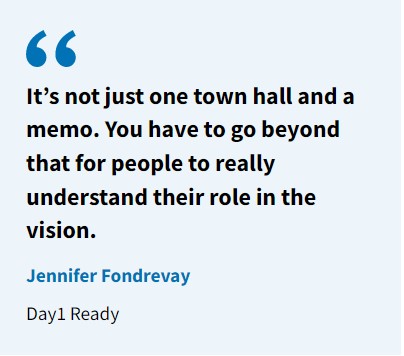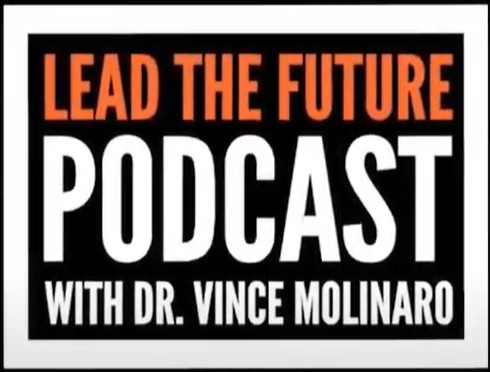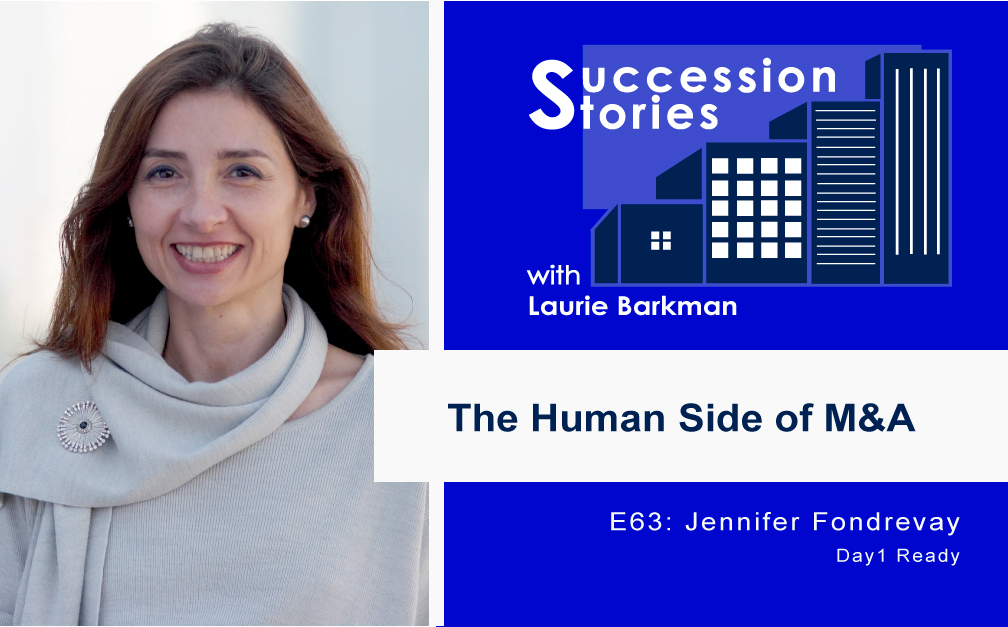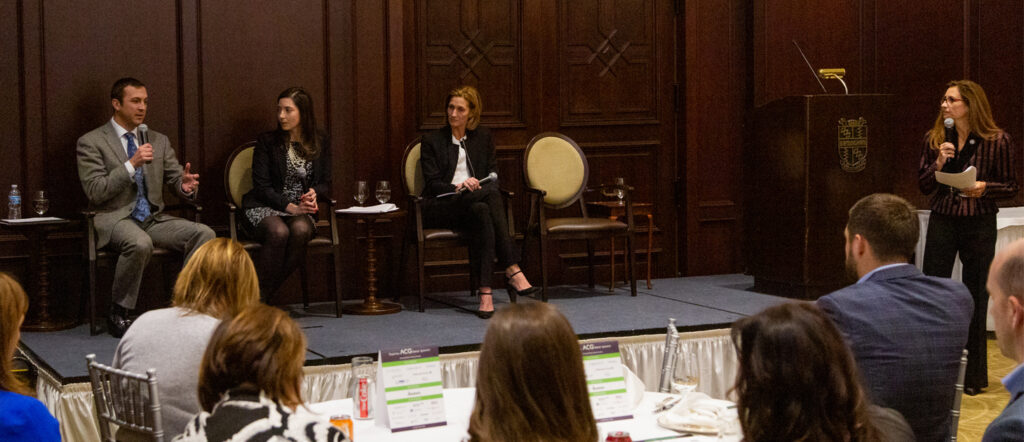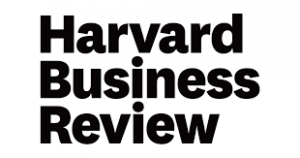by Jennifer Fondrevay
When a merger or acquisition is announced, people instinctively wonder who “they” are — “they” being the company on the other side. Whether the company is known or not, there’s an instinctive reaction to regard “them” with a wary eye. Cultural differences can…
More and more companies are relying on mergers & acquisitions (M&A) as a competitive growth strategy. Since 2012, M&A activity has increased dramatically in both number of deals and size of transaction, with the yearly value of global M&A deals tracking above $4.5 trillion for the past four years. These are heady numbers and 2018 is expected to continue apace. Yet when mergers are not done correctly, the end result can be at best uncomfortable, and at worst devastating to both companies.
As part of my consulting work on mergers and acquisitions, I created a playbook that defines the best practices for optimizing the human side of M&A. To uncover the human facets and the consistent challenges of M&A, I interviewed 55 executives from multinational to small- to medium-size companies all over the world. The interviewees, who were in the process of an M&A deal or who had recently been through one, included C-suite executives, private equity dealmakers, business owners, entrepreneurs, and middle managers. From these sessions, a consistent theme emerged: M&A often fosters us-versus-them thinking, which can undermine deal success from the get-go.
One of the great ironies of M&A activity is that trust, a key ingredient for business success, often quickly dissolves, as M&A activity is usually cloaked in secrecy. A workforce can feel blindsided when a deal is announced, eroding trust and transparency in three mutually reinforcing ways:
- “Our” company versus “their” company
- Executives versus frontline employees
- Who stays versus who goes
Let’s look at each of these:
Our Company Versus Their Company
When a merger or acquisition is announced, people instinctively wonder who “they” are — “they” being the company on the other side. Whether the company is known or not, there’s an instinctive reaction to regard “them” with a wary eye. Cultural differences can emerge, particularly if the companies have been at different ends of the spectrum in the marketplace. What makes sense on paper — i.e. a high-end product-line company merging with a low-end product-line company — can devolve into an us versus them dynamic as the companies’ different approaches and cultures inevitably conflict.
Consider this example: When The Interpublic Group (IPG) merged the direct-marketing company Draft with the ad-agency Foote Cone & Belding (FCB) to become one agency in 2006, “it was immediately apparent that the cultures of the two agencies were wildly different,” shared Marty Stock, then head of Coors advertising at FCB. “In bringing together a specialist direct-marketing agency with a generalist creative shop, cultural differences were bound to arise, given the contrast in customer approach and sensibilities. The differences drove an ‘us’ and ‘them’ mentality which was never really resolved, and which made integration unbelievably difficult.” Millions of lost dollars from client defections later, FCB split from Draft and reverted back to its origins in 2014.
Insight Center
Competing in the Future How to make your company more nimble and responsive.
Examples of successful acquisitions do exist, however, where the “our” company versus “their” company dynamic is minimized, largely due to the approach of the acquiring company. When Enterprise Rent-A-Car acquired Vanguard’s Alamo Rent-A-Car and National Car Rental in 2007, rather than executing a takeover, it moved slowly and sought to learn from its new brands. “Once the deal closed,” shared Enterprise CEO Andrew Taylor, “Enterprise pursued a deliberate integration. It was far more important to do it right than to do it quickly. We acquired Vanguard at an affordable price, so we could afford a thoughtful approach. When a new direction was chosen, it would reflect the best elements of both cultures and operating approaches.”
Executives Versus Frontline Employees
As senior leaders drive the integration process, midlevel and lower-level employees can begin to perceive senior level executives as getting more than their “fair share.” A perception that senior management is making money off of midlevel employees’ hard work can emerge. Should job losses occur, tensions may intensify as the remaining workers feel burdened “doing the job of many” to implement a strategy that executives, not managers, defined.
Even when there’s been a strong camaraderie throughout the organization, people can feel betrayed when executives leave with robust pay packages. Employees are not ignorant to M&A precedents where even CEOs of failed acquisitions have left with substantial pay packages. In those moments, trust erodes.
Executives have a critical role in minimizing us versus them thinking. Demonstrating commitment to the vision in word and deed is critical, and the pursuit of every activity must tie back to how it fits (or doesn’t fit) with the bigger picture. Nothing undermines change and its adoption more than behaviors by key individuals that are inconsistent with their words. To gain the workforce’s trust you must “walk the talk.”
Who Stays versus Who Goes
Cost-cutting and job losses typically occur in M&A as companies aggressively pursue efficiencies and eliminate redundancies. Deciding who stays and who goes are hard-wrought decisions. Transparency is difficult as executives and managers are either legally prohibited from being more open or don’t know how things will play out. Trust is diluted further when, in an attempt to keep people motivated, early communications sometimes say that “nothing will change,” and yet employees see change happening as people are let go.
Kim Feil, Chief Marketing and Strategy Officer for Aspire Healthy Energy Drinks, who experienced five separate M&A deals as head of marketing for Cadbury, IRI, Kimberly-Clark, Walgreen’s, and OfficeMax, had this to share: “Leaders know that while M&A can make sense on paper, the ability to achieve the vision is only as good as the team you put together.” During her multiple M&A experiences, Feil encountered well-thought-out organizational planning as well as unexpected curve balls. “Who will still have a chair when the music stops becomes the daily question,” Feil added. “So much is dictated by timing and where you are when the music dies. That said, you can’t just hope that things will work out.”
Feil attributes her successful acquisition experiences to upfront planning with leaders from both companies. “The key was focusing on the requirements for success, defining the teams needed to achieve them, and how they would intersect. ‘Who’ did it was not part of the upfront discussion, just the organizational design and structure were considered. Once that was defined, then all potential candidate profiles were considered and names then populated the structure.” What about the names not immediately selected? A clear message arose, consistently shared by executives I interviewed: when experiencing a merger or acquisition, know your value; don’t wait for the company to tell you what it is. Determine how your skills and experience will contribute to the mission and demonstrate that expertise repeatedly. Equally critical? If you determine your skills are no longer valued, find the employer who values them.
While us versus them thinking can undermine deal success, it doesn’t have to. These examples emphasize actions to take which can minimize the downside potential: a well-planned integration with a cohesive culture as the focus; consistent communication and commitment to the transition in both words and actions; and an organizational structure defined by what is best for the customer will go a long way toward positioning the new organization for success.

